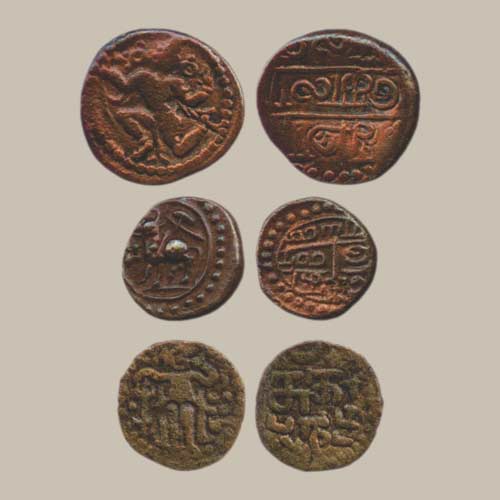Ancient Chola and Pandya Coins Discovered by School Children
2017-11-27 Mon
Chola and Pandya dynasty coins were discovered by three students of Suresh Sudha Azhagan Memorial Government Higher Secondary School at Thirupullani in Ramanathapuram district. The school’s heritage club had asked them to document heritage items that they found in their area.Mahendravarman I of Pallava dynasty to the Tamil kings from later periods released special coins to celebrate victories. Kanchipuram was known as Kachi in ancient period. The images in the coins changed based on who wins the battle. Pandyas issued coins featuring a fish, Cholas depicted Tiger on their coins and the image was a wild boar if the victory was against Chalukyas.
One of the Eelam coins from Sri Lanka was found at Sethukarai beach. This 'Kachi Vazhangum Perumal' coin was issued under the regime of Jadavarman Sundarapandyan I who ruled the Pandya Kingdom between 1,250 and 1,284 AD. He got the title Kachi Valangum Perumal after he captured Kanchipuram from Cholas. However, after the victory, the king handed over Kanchipuram back to the Chola prince as a generous act. These coins were issued under the title Sundarapandyan and Yellam Thalaiyanan. A stone inscription about King Jadavarman Sundarapandyan at Adhi Jaganatha Temple in Thirupullani reinstates the fact that the region was a part of the Pandyan Empire in those days. The coin features inscription of two fishes.
Some other Eelam coins were issued under the regime of Rajaraja Chola when he captured a part of Sri Lanka. Sri Lankan rulers were also inspired by Chola Kings and released their own gold, silver and copper coins. The copper coins were called as 'Eela Karunkasu' or black coins.
Thanjavur Tamil University at Periapattinam, Kalimangundu in Ramanathapuram district had conducted excavations, during which these Eelam coins were discovered. This shows that the region had strong trade relations with Sri Lanka. Experts believe that these coins can be found on a beachside since trade cities were situated near coastal towns.
Latest News
-
Gold Pagoda of Vijaynagar Empire King Deva Raya I
2024-04-10 WedKing Deva Raya I of the Vijayanagara Empire was a patron of Kannada literature and architecture. He ...
-
Silver Denarius of Septimus Severus
2024-04-05 FriLucius Septimius Severus served as the Roman emperor from 193 to 211 AD. Severus sat on the throne o...
-
Extremely rare 'Malaharamari' type Gold Gadyana of King Guhalladeva-III Sold for INR 611000
2024-04-03 WedTribhuvanamalla, also known as Guhalladeva III, was the ruler of the Kadamba dynasty. His reign coin...
-
90 Years of RBI
2024-04-02 TueOn 1st April, PM #Modi unveiled a special commemorative coin marking 90 Years since the foundation o...
-
Silver Denarius of Julia Mamaea
2024-04-02 TueJulia Avita Mamaea, a Christian Syrian noblewoman, was the mother of Roman Emperor Alexander Severus...

